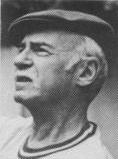This type of kite, a rigid, heavier-than-air flying vehicle, was almost the size of a Piper Cub airplane. It had a rudder, and its direction could be changed by pulley lines attached to the lead line and to both wings. On it was painted a Nazi warplane. These kites were being sold in all the army and navy surplus stores and were a drug on the market because neither the army nor the navy was practicing shooting or identifying Nazi planes anymore. Furthermore, one of the reasons why none of them were sold to the conventional kite flier was that it took a ground crew to assemble one of them.
I finally managed to put one together on a fine spring day and sailed it aloft in the baseball field above 96th Street in Central Park. The West Side Rats, a pickup baseball team of neighborhood sports, were in the field for their early spring training. A crowd of onlookers watched the team, scouting them for bets they would make later in the season when the semipro hardball league opened.
All of a sudden my mammoth kite, with Nazi markings on its underbelly, roared across the park out of control, dragging me in its wake on a thirty-mile wind of tornado size. The startled ballplayers and spectators began to scream as the kite yawed and slipped toward the ground from a height of 350 feet. "Pearl Harbor!" screamed one of them as he dived to the ground. "Hit the ditches!" cried the captain of the baseball team as he led his men in a tumbling roll into a nearby gully. The spectators scrambled as, with a terrific roar, the kite swooped to home plate on the diamond and crashed. The lead line and I were still in the outfield.
The shaken players and spectators returned to view the wreckage and looked for bullet holes. It wasn't until I reeled myself in on the lead line that they realized that it was nothing but a kite.
I never flew a Garber kite again.

Paul Garber's target kites are demonstrated at the Naval Air Station in Anacostia, in 1944. These are seven-footers - his first were five-footers. |
The Complete Book of Kites and Kiteflying by Will Yolen, pages 19-20,52. Simon & Schuster, 1976.
